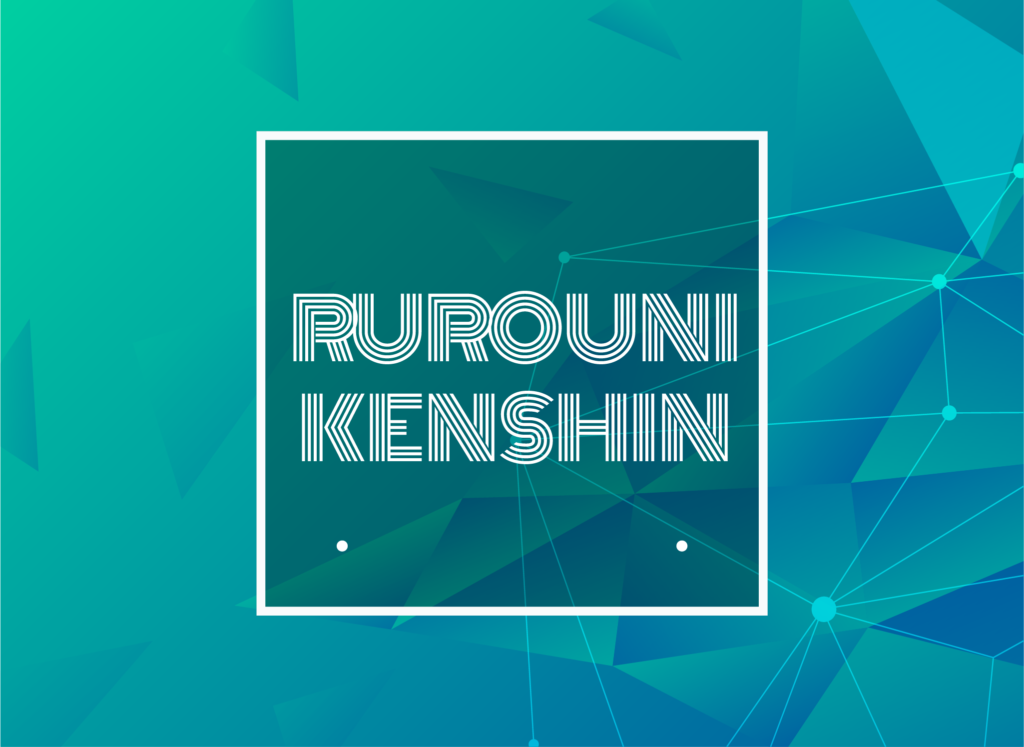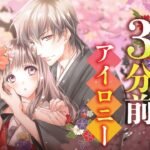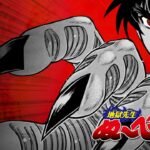In the rich tapestry of anime, few characters are as compelling and enduring as Himura Kenshin. Known to many as the legendary Hitokiri Battōsai, Kenshin’s journey from a ruthless assassin to a peaceful wanderer embodies themes of redemption, honor, and the quest for inner peace. Set against the backdrop of Japan’s turbulent transition into the Meiji era, Rurouni Kenshin chronicles his struggles and triumphs as he seeks to atone for his past sins.
Please note: This article contains spoilers for ‘Rurouni Kenshin.’
The Rise of Himura Kenshin as Hitokiri Battōsai
Early Life and Training
Born on June 20, 1849, Himura Kenshin experienced tragedy early when a cholera outbreak claimed his parents. Orphaned and vulnerable, he was sold into slavery but was rescued by the enigmatic swordsman Seijūrō Hiko. Recognizing the boy’s potential, Hiko took him as his apprentice, renaming him from “Shinta” to “Kenshin” to reflect the warrior he was destined to become. Under Hiko’s tutelage, Kenshin mastered Hiten Mitsurugi-Ryū, an ancient sword style known for its incredible speed and power.
Becoming the Legendary Assassin
Driven by a desire to protect the innocent during the tumultuous Bakumatsu period, Kenshin left his master at 14 to join the pro-Imperialist Ishin Shishi. His unmatched skill quickly turned him into the feared Hitokiri Battōsai, an assassin whose blade paved the way for the Meiji Restoration. Wielding his katana with lethal precision, Kenshin believed that his killings were a necessary evil to usher in a new era of peace.
The Cross-Shaped Scar: A Symbol of Remorse
During his tenure as an assassin, Kenshin encountered Kiyosato Akira, a skilled samurai whose determined resistance left a deep slash on Kenshin’s left cheek—the first half of his iconic cross-shaped scar. Unbeknownst to Kenshin, Akira was engaged to Tomoe Yukishiro, who would later play a pivotal role in his life. This scar became a constant reminder of the lives he took and the heavy burden of his actions.
Meeting Tomoe Yukishiro
Tomoe, seeking revenge for her fiancé’s death, infiltrated Kenshin’s life under the guise of companionship. However, as they spent time together hiding in a remote village, genuine feelings blossomed. Tomoe’s gentle presence brought a sense of peace to Kenshin’s tormented soul, allowing him glimpses of a life beyond bloodshed.
The Tragic End of Hitokiri Battōsai
Their brief happiness was shattered when Tomoe sacrificed herself to save Kenshin during an ambush orchestrated by enemies seeking vengeance. In a cruel twist of fate, Kenshin accidentally inflicted the fatal wound upon Tomoe, who, with her dying breath, added the second slash to his scar. Devastated by her death and the realization of his actions’ consequences, Kenshin abandoned his role as an assassin, vowing never to kill again.
The Transition to Rurouni: The Tokyo Arc
Embracing the Vow of Non-Killing
Haunted by his past, Himura Kenshin adopted the life of a rurouni—a wandering samurai without a master. Carrying a unique reverse-blade sword (sakabatō), he committed himself to protecting others without taking lives, seeking redemption for the blood that once stained his hands.
Meeting Kaoru Kamiya
In Tokyo, Kenshin’s fate intertwined with Kaoru Kamiya, the spirited assistant master of the Kamiya Kasshin-Ryū dojo. Mistakenly believing him to be a murderer tarnishing her school’s reputation, she soon discovered his true nature. Moved by his kindness, Kaoru offered him shelter, providing Kenshin with a new home and a semblance of family.
New Allies: Sanosuke Sagara and Yahiko Myōjin
Kenshin’s circle of friends grew as he befriended Yahiko Myōjin, a brash orphan from a samurai lineage, and Sanosuke Sagara, a hot-headed fighter with a grudge against the Meiji government. Together, they faced various challenges, each bringing their strengths to protect those in need.
Facing Past Ghosts: Udō Jin-e
The peace Kenshin sought was tested by remnants of his past, including Udō Jin-e, a former assassin reveling in chaos. When Jin-e endangered Kaoru, Kenshin grappled with his inner Battōsai persona, nearly breaking his vow to save her. This confrontation solidified his resolve to uphold his non-killing oath.
Protecting the Innocent
Throughout the Tokyo Arc, Himura Kenshin demonstrated his commitment to justice without bloodshed. Whether thwarting corrupt industrialists or dismantling opium rings, his actions reflected his desire to atone and his belief in protecting life.
Confronting Past Shadows: The Kyoto Arc
The Threat of Makoto Shishio
Peace was short-lived as Makoto Shishio, Kenshin’s ruthless successor, emerged with plans to overthrow the government. Burned and left for dead by the very officials he served, Shishio sought revenge by plunging Japan back into war.
Return to Master Seijūrō Hiko
Realizing he needed greater strength, Kenshin returned to Seijūrō Hiko to learn the ultimate technique of Hiten Mitsurugi-Ryū—the Amakakeru Ryū no Hirameki. This rigorous training forced Kenshin to confront his guilt and embrace his will to live, essential for mastering the technique.
Gathering Allies
Kenshin’s journey brought together a diverse group of allies, including former enemies like Aoshi Shinomori of the Oniwabanshū and Saitō Hajime, an ex-Shinsengumi officer. Their shared goal to stop Shishio underscored themes of forgiveness and unity.
The Epic Battle in Kyoto
The confrontation with Shishio and his elite Juppongatana pushed Kenshin to his limits. Battling formidable foes, he faced not only physical challenges but also the temptation to revert to his old ways. His unwavering commitment to his vow became both his anchor and his greatest strength.
Defeating Shishio and Overcoming Inner Demons
In a climactic duel, Kenshin defeated Shishio by embracing the essence of Hiten Mitsurugi-Ryū and his own will to protect others. The victory symbolized a triumph over his inner demons and reinforced his path of redemption.
The Jinchū Arc: Redemption and Reckoning
Encounter with Enishi Yukishiro
Just as Kenshin found peace, Enishi Yukishiro—Tomoe’s younger brother—emerged from the shadows, consumed by vengeance. Blaming Kenshin for his sister’s death, Enishi orchestrated a campaign of Jinchū (personal retribution), targeting Kenshin’s loved ones.
The Orchestrated Revenge
Enishi’s meticulous plans struck at the heart of Kenshin’s new life. By attacking his friends and allies, he aimed to mirror the pain of loss that he experienced, pushing Kenshin to the brink of despair.
The Apparent Death of Kaoru Kamiya
The culmination of Enishi’s revenge was the staged death of Kaoru, leaving behind a lifelike doll to mimic her corpse. Believing he had failed once again, Himura Kenshin spiraled into guilt and self-imposed exile, retreating to a community of outcasts.
Kenshin’s Despair and Revival
Kenshin’s friends refused to abandon him. Through their unwavering support and the revelation that Kaoru was alive, he found the strength to return. Accepting that atonement comes from living and protecting, not from self-punishment, Kenshin resolved to save Kaoru and confront Enishi.
Resolving the Past and Forgiveness
In their final confrontation, Kenshin faced Enishi not as an enemy but as a reflection of his own tormented soul. By acknowledging Enishi’s pain and expressing genuine remorse, he broke the cycle of vengeance. Enishi, overwhelmed by the truth of his sister’s forgiveness conveyed through her diary, chose to relinquish his hatred.
A New Beginning: The Hokkaido Arc
Searching for Kaoru’s Father
The journey continues as Himura Kenshin and his companions travel to Hokkaido in search of Kaoru’s missing father, Kamiya Koshijirō. This new chapter explores uncharted territories and deepens the narrative, introducing fresh challenges and mysteries.
Facing New Threats
In Hokkaido, Kenshin encounters the mysterious Gatling Man and a clandestine organization threatening the fragile peace. Facing adversaries with advanced weaponry, he must adapt his skills to protect those he holds dear.
Reunion with Old Allies
The northern expedition brings back familiar faces, including Sanosuke Sagara, who rejoins the group after his travels abroad. Their reunion underscores the enduring bonds formed through shared hardships and victories.
The Legacy of Himura Kenshin
As a new generation rises, Kenshin’s influence becomes evident. His teachings and principles inspire others, including young swordsmen like Ashitaro Hasegawa, highlighting the lasting impact of his journey toward redemption.
Continuing the Journey
Even as he confronts new dangers, Kenshin remains steadfast in his commitment to his vow. The Hokkaido Arc symbolizes growth and the ongoing pursuit of peace in a world still grappling with the remnants of its turbulent past.
Himura Kenshin embodies the enduring struggle between redemption and the shadows of one’s past. His evolution from the feared Hitokiri Battōsai to the compassionate rurouni showcases the transformative power of forgiveness and the unwavering pursuit of peace. Through each arc of Rurouni Kenshin, audiences witness a profound narrative of atonement, the complexities of human emotion, and the belief that even the deepest scars can heal.
Kenshin’s story is a testament to the idea that our choices define us more than our origins. His dedication to protecting life and seeking redemption offers a powerful message that resonates beyond the realm of anime. As he continues his journey, Himura Kenshin remains a timeless symbol of hope, courage, and the boundless possibilities of change.
[Note: This article is intended for fans and newcomers interested in the story of Himura Kenshin. It provides an overview of key plot points and character developments within ‘Rurouni Kenshin.’]







